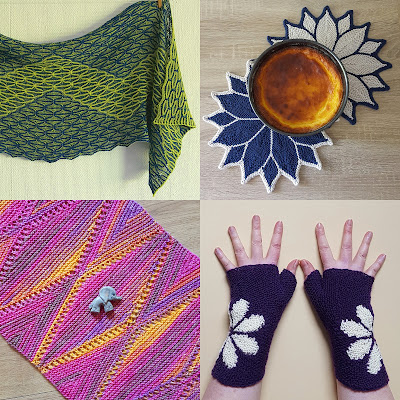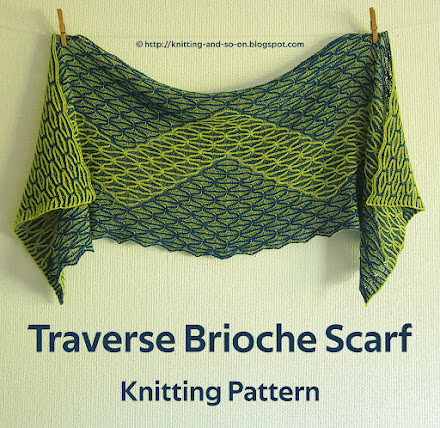I've always wanted to do a big lacy half-circle shawl all in garter stitch. This doily started out as a test piece for that kind of shawl. However, I liked the small piece quite a lot, so I tried to figure out how to do it in a seamless full circle – and here it is.
This doily consists of diamonds that stack up to be triangles which in turn form a (slightly angular) circle. It starts with a provisional cast on and is finished by grafting in garter stitch (just before knitting and binding off the last stitches). It is NOT A BEGINNER PATTERN.
The knitting pattern is available via
- written row-by-row instructions for knitting this piece – including 6 photos
- schematic of the construction, i.e. how the diamonds stack up to create the whole piece
- chart(s) of one diamond
- short photo tutorials for the following techniques
- provisional CO with a crochet hook and undoing it
- grafting in garter stitch
- short rows with wrap and turn and picking up the wraps
- crochet CO (at the edge of a knitted piece)
- backwards loop CO
- about 250 metres of light fingering weight yarn (for the blue piece in the photos I used Creative Melange Lace by Rico Design, colorway 011 - here's the yarn's Ravelry page, the red one is made with Wollmeise Lace, colorway Allegria - here's the yarn's Ravelry page)
- 2.5 mm knitting needles
- a crochet hook of a similar size (I used a 2.5mm hook)
- scrap yarn
- a tapestry needle – for grafting and to weave in ends































